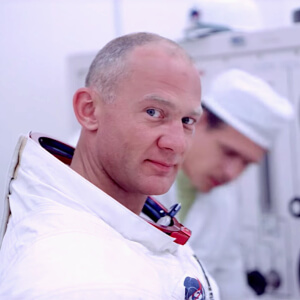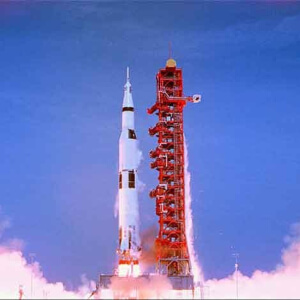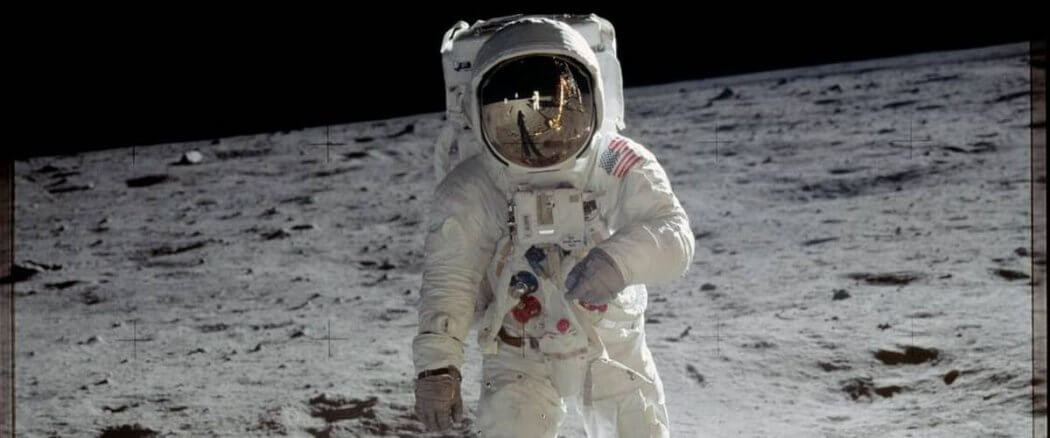It’s been almost 47 years since mankind last walked on the moon. The 1972 moon landing came a little more than three years after Apollo 11, meaning all 12 men to have ever walked on the hallowed lunar surface did so in the course of three years, four months, and 23 days.
The above numbers inevitably raise the question, “why?” Why, if getting to the moon was so important, did we stop after only three years? Why, at such great risk of life, even try in the first place? When John F. Kennedy passionately declared his desire to see a man on the moon, the answer seemed obvious, if not oversimplified.
Why?
Well, why not?
The question of, “why?” that hovers delicately over all space expeditions also hangs in the balance of Todd Douglas Miller’s Apollo 11, which uses previously unreleased 70 mm footage and archival audio to document the ins and outs of the 1969 voyage. The answer seems much muddier now than it did five decades ago. In days of war, climate change, overpopulation, and disease, why focus on all of the universe that is not where we are?
Miller, using beautifully rendered, unreleased 70 mm film, as well as archival audio, posits the answer, “because we could.”
First Men
Apollo 11 isn’t the first movie to tackle the trip leading up to the 50th anniversary this summer. Damien Chazelle’s First Man debuted last fall — and was discussed on this website — highlighting the singular focus of Neil Armstrong as he flew toward history.
While the two films may share similar aesthetic preferences — heavily-contrasting color palettes, spacious cinematography — Apollo 11 is far more concerned with the bigger picture. First Man is a character study first and foremost, an attempt by Chazelle to deeply probe the mind of an achiever, highlighting Armstrong’s motivators and triggers.
 Apollo 11, on the other hand, explores the grandeur of both the journey and the destination, with a particular eye toward the people that made it happen. Countless characters we’ve never seen or met are laid before the camera’s all-seeing eye. It’s no secret that sending mankind to space was never an individual achievement, but even the best space epics — Apollo 13, 2001: A Space Odyssey, and The Martian come to mind — haven’t captured the sheer amount of manpower that fueled the journey.
Apollo 11, on the other hand, explores the grandeur of both the journey and the destination, with a particular eye toward the people that made it happen. Countless characters we’ve never seen or met are laid before the camera’s all-seeing eye. It’s no secret that sending mankind to space was never an individual achievement, but even the best space epics — Apollo 13, 2001: A Space Odyssey, and The Martian come to mind — haven’t captured the sheer amount of manpower that fueled the journey.
Interestingly, if somewhat obviously, the best footage mostly zeroes in on the men at Mission Control as they communicate with each other and astronauts in Apollo 11. Workers with headsets fidget with pens, click buttons, and turn knobs. There’s a feverish pace to the way they work, and the film’s aesthetic matches perfectly. A buzzy, thumping EDM soundtrack paces the editing as it cuts from face to face, all focused on the monumental task at hand. The emotion of the moment is communicated marvelously, nullifying the fact that we all know how this story ends.
One Giant Leap
What makes Apollo 11 such an impressive feat, though, is the symmetry between its subject matter and its technical achievements.
There’s nothing in the film that hasn’t been done before. Archival footage and audio has been restored and presented in high definition — most recently in Peter Jackson’s war epic They Shall Not Grow Old. The story of Apollo 11 has been told many times before, as noted above with Chazelle’s celebrated biopic.
However, the film’s accomplishments feel remarkably fresh given the well-trodden material. Perhaps it’s the darker palette that tracks with sleek, modern blockbusters. Maybe its the juxtaposition between the vastness of space and the concern lines etched on every face at Mission Control. Maybe it’s both.
What’s most striking, though, is the precision with which everything is done. There’s a moment just hours before launch where engineers have to fix a leaky hose. We’re treated to the details of those conversations as well as split-screen footage showing the engineers working on the rocket while the astronauts make their way into the shuttle. We know from the history of space travel that small missteps can be fatal, and the details make all the difference. In the same way, Apollo 11 is made with detailed care. Every cut, every musical swell, and every moment of silence feeds into the next moment, with the goal of perfect execution well within reach.
 Still, the precision doesn’t detract from the grand nature of the accomplishment. You could say Apollo 11 — both the flight and the film — were more than the sum of their parts, but that would be over-simplifying it. Space travel and filmmaking both take incredibly detailed work from thousands of people to create something that seems larger than life. Much like the Apollo 11 flight felt like one giant leap for mankind, the film lets viewers participate in its emotional payoffs.
Still, the precision doesn’t detract from the grand nature of the accomplishment. You could say Apollo 11 — both the flight and the film — were more than the sum of their parts, but that would be over-simplifying it. Space travel and filmmaking both take incredibly detailed work from thousands of people to create something that seems larger than life. Much like the Apollo 11 flight felt like one giant leap for mankind, the film lets viewers participate in its emotional payoffs.
In a triumph of access, we get to see and hear the moments — through pictures both on the surface and in Houston — when Armstrong and Aldrin take their first steps. We fully take part in Collins’ journey behind the moon, including the radio silence and the jubilant buzz of re-establishing communication once he returns. Miller’s film is generous in this way, using access not just to give us a peek behind the curtain, but rather to invite us into the room. His accomplishments feel like ours in these moments, making Apollo 11 feel earned in the same way all (well, most) of humanity felt in 1969.
Man’s Reach Reflects His Maker’s Grasp
The most rewarding thing about Apollo 11, much like the flight it seeks to capture, is how it reflects the desire for excellence that is embedded in all of us.
Throughout record history, we see the accomplishments of man lauded, even the ones that fail to stand the test of time. We marvel at the lifespan of the Roman Empire, just as we mark with awe the moment that it fell. We have great wonders of the world that seek to capture humanity’s grasp and inspire us toward our reach.
However, as Armstrong and Aldrin take the first human steps on a non-earth body and the people at Mission Control celebrate one of mankind’s greatest achievements, it’s hard not to think of Genesis 1, when creation is pronounced as, “good.” In the laying of the earth’s foundations, the sprouting of the grass and trees and the first flight of the birds in the air, we see a Maker committed to goodness.
What we also see is the same Maker create mankind in his own image, an indelible sign of his plans for humanity. Even in the midst of a fallen world, his glory is shouted through the accomplishments of mankind, be it in a beautiful monument, a journey into the further reaches of space… even in the making of a film that seeks to capture the glory of those moments.
And it is very good.





